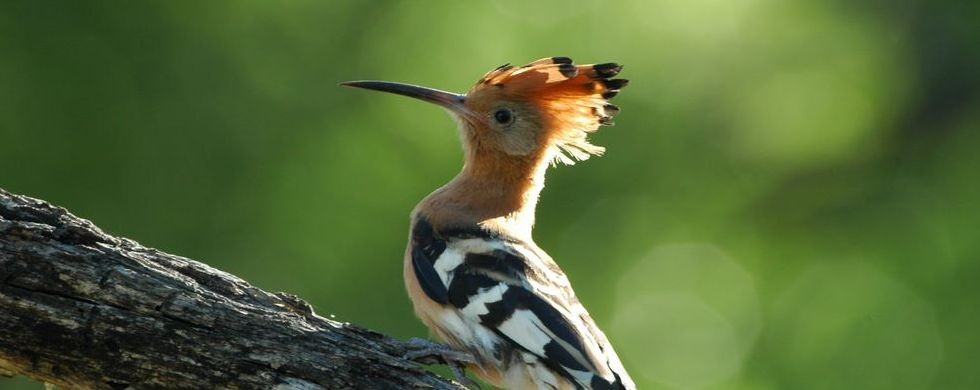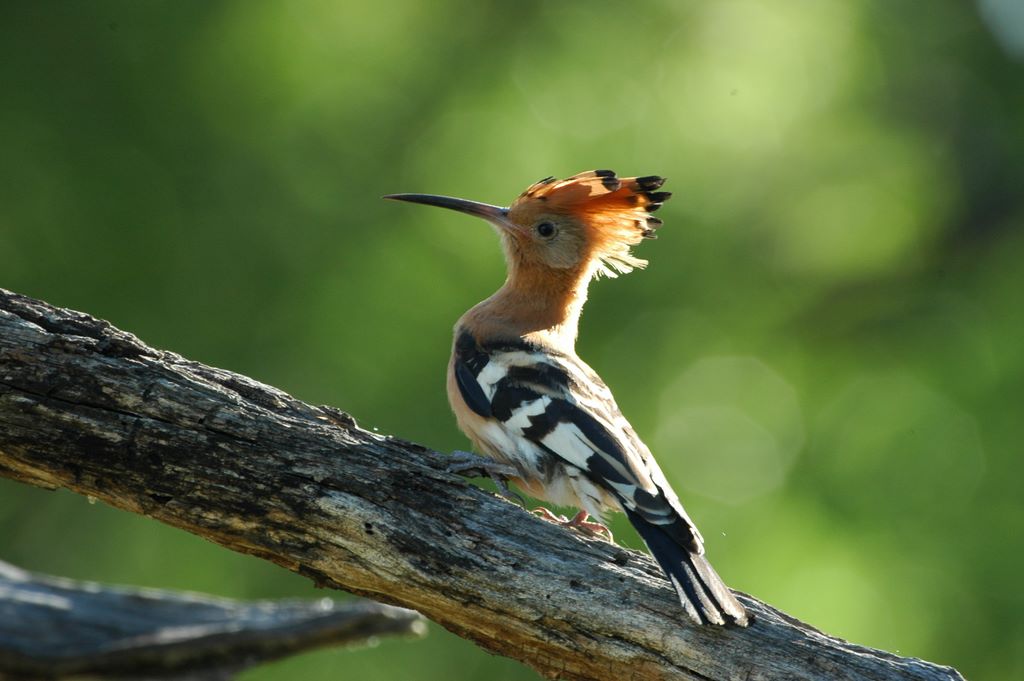
15
2011Hoopoe – April 2011
Shot of the Month – April 2011
Do you have someone in your family or perhaps a friend or two in which everything about them seems bigger than life? The way they dress, the way they act, how they talk, the stories they tell, the situations they seem to find themselves in? Well, if you were a bird, your buddy the Hoopoe would be that over-the-top pal. The one shown here was photographed in Botswana.
Check out his dramatic style. His wings and back are painted with striking black and white markings. The head and neck are adorned in a beautiful hue of gold. And then there is that headdress. When excited he will snap it open with great flair and may bob his head up and down to ensure that all take notice.
And these guys really get around. They can be found in Europe, Asia, North Africa, Sub-Saharan Africa and Madagascar. Like true jet setters, those from Europe and north Asia will migrate to warmer temperatures in the tropics during the winter.
Fly in a straight line like the rest of us birds? No, too pedestrian. The hoopoe has a distinctive style – by closing his wings every few beats his undulating flight pattern bobs up and down much like how a cast-away bottle rises and falls with the ocean swells.
Birds spend their time in trees, right? Well, the hoopoe spends much of his time on the ground foraging for something to eat. He uses that long, slightly curved bill to detect and extract insects, particularly insect larvae and pupae, from the soil. Hoopoes are fond of crickets, locusts, beetles, cicadas, and so forth but will occasionally dine on small reptiles, and frogs and may partake in seeds or berries.
And then there is the fighting. Hoopoes are very territorial and the males get into brutal fights and will try and stab each other using those long bills like daggers. Some birds have been known to be blinded during such battles!
Other over-the-top behavior? Oh, there’s more. Female hoopoes raising young produce a foul-smelling liquid that they rub over themselves while in the nest. The young, mother and the entire nest smell like rotting meat. Scientists posit that this wretched liquid deters predators and may act as an antibacterial agent.
And the hoopoe chicks have a very endearing trick up their sleeves. From the age of six days, nestlings can fire streams of feces at intruders and they can hiss like snakes to try and scare off would-be attackers. (Thanks, but I’ll pass on babysitting those little darlings)
And hoopoe are such hobnobs — humans seem to be fascinated by these starlets. Egyptians considered them sacred and their likeness can be found on ancient tombs and temples. Hoopoes are mentioned in the Bible and Koran alike. In Persia hoopoes were a symbol of virtue and they were prominent in the Persian book of poems “The Conference of the Birds.” And they are the national bird of Israel. Harrump. Show-offs.
Such flair, energy, and panache. Yes, hoopoes and their ilk can be tiresome at times. But, I think we all need a few hoopoes in our lives to remind us to dare to be bold and embrace life.
Until next month. 🙂

